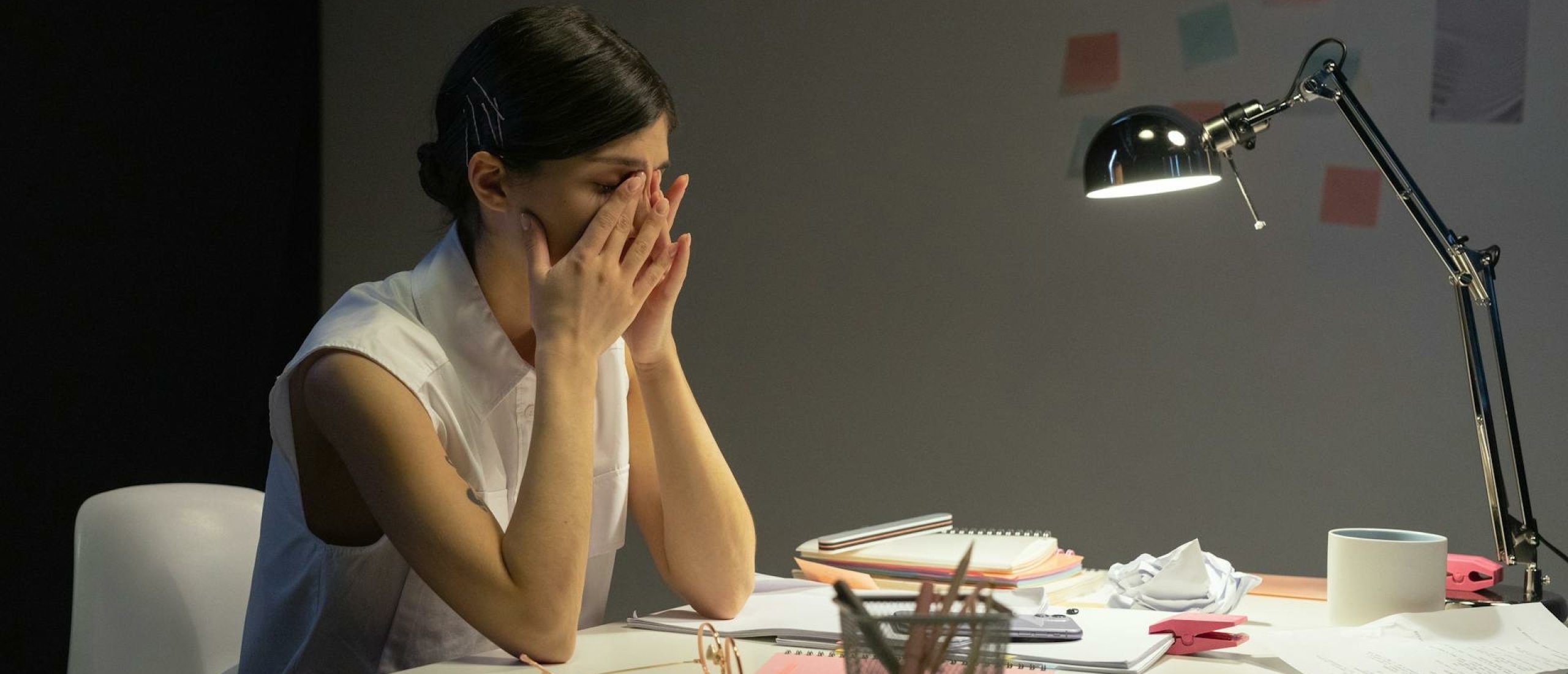
In today's fast-paced work environments, long hours at a desk and constant digital interruptions can quickly lead to physical tension and mental fatigue. Yet research shows that even short pauses during the day can offer quick stress relief and help you reset without falling behind on tasks.
That’s where micro-breaks at work come in.
These short, intentional breaks—often just 1 to 5 minutes—offer a simple yet powerful way to reduce stress, improve focus, and maintain energy levels throughout the day. Whether you're looking for a quick way to unwind between meetings or a small step toward preventing burnout, desk breaks and micro-recovery moments can support your well-being and help you manage daily stress more effectively.
In this guide, you'll discover the best micro-breaks at work to reduce stress—plus practical tips on how to build them into your schedule without disrupting your workflow.
What Are Micro-Breaks?
Micro-breaks are brief, restorative pauses taken during your workday. Unlike lunch breaks or scheduled coffee breaks, micro-breaks usually last between 30 seconds and 5 minutes and are sprinkled throughout your daily tasks.
Think of them as a mental and physical reset button. They’re not a luxury—they’re a strategy for resilience and performance.
Whether you're looking for a quick way to unwind between meetings or a small step toward preventing burnout, desk breaks and micro-recovery moments can support your well-being and help you manage daily stress more effectively. The prevention and reduction of workstress will be especially evident to you when you know the early signs of workplace stress. These symptoms are less likely to occur.
Why Micro-Breaks at Work Reduce Stress
Continuous effort without recovery can trigger your body’s stress response, raising cortisol levels and leading to mental overload. Fortunately, studies show that micro-breaks help regulate stress, improve mood, and prevent burnout.
Here’s how:
- Quick stress relief: Even short pauses allow your nervous system to shift from high-alert to calm.
- Better focus: Micro-breaks reduce cognitive fatigue and help you regain concentration.
- Less physical strain: Regular desk breaks reduce muscle tension and prevent repetitive stress injuries.
- Mood boost: Tiny pauses can improve emotional balance and reduce irritability.
- A sense of control over your schedule: a key factor in reducing stress at work.
Integrating micro-breaks into your day is one of the best ways to reduce stress at work—especially if you sit at a computer all day or deal with frequent demands.
Micro-Breaks at Work to Reduce Stress and Boost Focus
1. 20-20-20 Eye Reset
Duration: 1 minute
How: Every 20 minutes, look at something 20 feet away for 20 seconds.
Why: Reduces digital eye strain and offers a moment of cognitive rest.
2. Box Breathing
Duration: 2–3 minutes
How: Inhale for 4 seconds → hold → exhale → hold (each 4 seconds). Repeat.
Why: This technique slows your heart rate, lowers cortisol, and calms the mind.
3. Desk Stretching
Duration: 2–3 minutes
How: Stretch your arms, back, neck, and shoulders at your workstation.
Why: Physical micro-breaks reduce muscular tension from prolonged sitting and help your brain feel more alert.
4. Mini-Mindfulness Break
Duration: 1–5 minutes
How: Sit quietly, focus on your breath, and observe thoughts without judgment.
Why: Mindful desk breaks have been shown to reduce anxiety and enhance concentration.
5. Stand Up and Move
Duration: 3–5 minutes
How: Walk around the room, go outside, or stand and stretch.
Why: Movement increases blood flow and helps your body “reset” physically and mentally.
6. Gratitude Pause
Duration: 1 minute
How: Think of something positive or note it in a journal.
Why: Practicing gratitude shifts your brain toward optimism and emotional balance.
7. Micro-Journaling
Duration: 2–3 minutes
How: Write a few lines about your current feelings or tasks.
Why: It clears mental clutter and helps you prioritize without stress buildup.
How to Make Micro-Breaks a Habit
Want to make micro-breaks stick? Here’s how:
- Use natural cues: Take a break after meetings, calls, or email replies.
- Set a timer: Try a 50/10 method (50 minutes work, 10 minutes break).
- Stack with other habits: Stretch while waiting for a file to load or breathe deeply before joining a Zoom call.
- Try a break reminder app: Tools like “Stretchly” or “BreakTimer” gently prompt you throughout the day.
Remember: you don’t need to leave your desk to reset—even a few intentional breaths can lower stress and recharge your brain.
Make Micro-Breaks Work for You
Micro-breaks at work aren’t time-wasters—they’re performance enhancers. When practiced regularly, they reduce stress, sharpen your focus, and help you stay energized without pushing yourself to the brink.
Start small. Pick one or two breaks that feel doable and add them to your day. With time, these short moments of pause will become a powerful stress relief habit.
Free Download
Feeling overwhelmed at work? Download our free ebook:
“Overwhelmed at Work? 5 Micro-Actions to Regain Control”
Get the ebook here.
References
Ariga, A., & Lleras, A. (2011). Brief and rare mental “breaks” keep you focused: Deactivation and reactivation of task goals preempt vigilance decrements. Cognition, 118(3), 439–443. https://doi.org/10.1016/j.cognition.2010.12.007
Kim, S., Park, Y., & Niu, Q. (2017). Micro-break activities at work to recover from daily work demands. Journal of Organizational Behavior, 38(1), 28–44. https://doi.org/10.1002/job.2109
McLean, L., Tingley, M., Scott, R. N., & Rickards, J. (2001). Computer terminal work and the benefit of microbreaks. Applied Ergonomics, 32(3), 225–237. https://doi.org/10.1016/S0003-6870(00)00071-5











